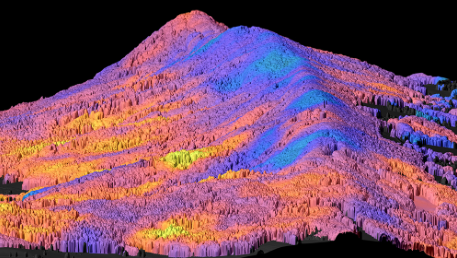Navigation auf uzh.ch
Navigation auf uzh.ch
Productivity and stability of forest ecosystems strongly depend on the functional diversity of plant communities. Using airborne remote sensing the authors have developed a new method to measure and map functional diversity of forests at different scales – from individual trees to whole communities.

Plant functional diversity can directly be measured by mapping selected morphological and physiological traits of a forest from above. In the past, functional traits of plants had to be measured by very labor-intensive fieldwork on the ground. The authors have now developed a new remote-sensing method to map functional diversity of forests from small to large scales, independent of any predefined vegetation units or species information and without the need for ground-based calibration. The Laegern mountain, a temperate mixed forest ecosystem located near Zurich, Switzerland, served as a case study.
With airborne laser scanning, the authors measured morphological characteristics of the forest canopy such as canopy height, foliage and branch densities, while biochemical properties of the forest were estimated using airborne imaging spectroscopy.
The authors validated their method by comparing the results with leaf-level field measurements, species-level plot inventory data and databases providing functional trait values. Using computer modelling, they were able to assess diversity patterns of morphological and physiological traits at a whole range of scales, from local diversity between individual trees to large-scale patterns of plant communities following environmental gradients. A strong relationship was found between the observed functional diversity patterns and environmental factors such as soil and topography, with lower diversity on the mountain ridge under harsher environmental conditions, where the trees adapted to the dry, steep, shallow and rocky soils.
Since the methodology is only limited by the availability of advanced technological sensors, this work paves the way for future airborne and satellite missions aiming at monitoring global plant functional diversity from space.
Schneider, Fabian D.; Morsdorf, Felix; Schmid, Bernhard; Petchey, Owen L.; Hueni, Andreas; Schimel, David S.; Schaepman, Michael E.